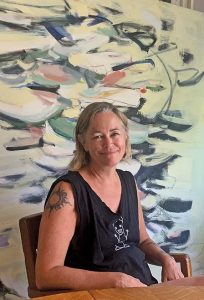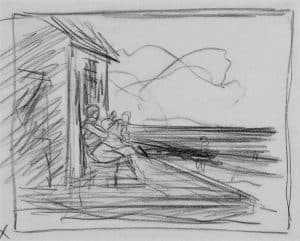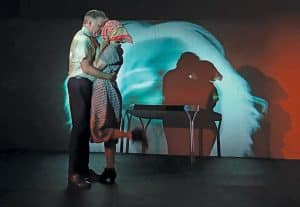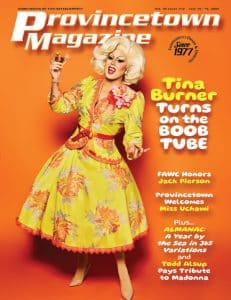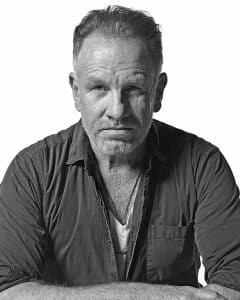by Steve Desroches
As a teenager growing up in Cambridge, Stephen Aiken loved the Velvet Underground. Though largely a phenomenon of New York City, the Velvet Underground played more in Boston in the mid-1960s than anywhere else, usually at the legendary rock and roll concert hall, the Boston Tea Party on Berkeley Street in the South End. There was just something about the band and the then gritty city that clicked as it attracted diverse audiences full of college students, bikers, bohemian eccentrics, artists, and the beautiful people dipping their toe into the cutting edge. Lou Reed declared the Boston Tea Party the band’s “favorite place to play in the whole country.” And Aiken was one of those in the packed venue who couldn’t get enough of the totally new sound that was the Velvet Underground as they sang about the taboo, the shocking, and the erotic.
Aiken saw them many times, but one night in particular, seeing the Velvet Underground was a tectonic moment that would change the trajectory of his life forever. The Velvet Underground had come to Boston to perform as part of the Plastic Exploding Inevitable, Andy Warhol’s multimedia show featuring rock and roll, dance, film, and pop art, an event that crossed Cape Cod Bay to play Provincetown, too. As Aiken took it all in, the artist within not only took root, but bloomed.
“Warhol was like the door just flew open,” says Aiken. “Everything was permissible. Art was not just a moneyed elitist thing. It was my culture now.”

The New School, 1974

Church in-the-Bowery, 1974
The democratization of art for the Baby Boomers couldn’t help but spread quickly among such a massive generation with a corresponding unstoppable youth movement taking over politics and culture. As a college student Aiken convinced the University of Massachusetts, Amherst to allow him to create a BFA program in photography allowing him access to the consortium of schools and to hopscotch around western Massachusetts taking classes at Smith and Amherst colleges. There he met graduate students, many of whom were from New York, working on their own art degrees. That’s when he was caught in the gravitational pull of New York City and moved there in 1973 in time to bear witness and document an atomic explosion of art that would completely change American culture forever.

Fifty years after his arrival in New York, Aiken is publishing his photographic work of the times in the book Artists in Residence: Downtown New York in the 1970s with his work appearing in a corresponding show at the Schoolhouse Gallery. Sitting in the front exhibition room at the East End gallery the vibrations of the times emit from the photographs on the wall. Images of Allen Ginsberg, Patti Smith, Leonard Cohen, William Burroughs, Bob Dylan, John Cale, and Joseph Beuys with several shots of the decline and decay of New York City that at once made it dangerous and frightening, but also thrilling and open to the art that was firing at all cylinders downtown. While Warhol’s Factory may have had a velvet rope policy, this aspect of New York art was open to all if you brave enough to explore the mean streets of a city in crisis.


“So much of the art world used to be like that; small and intimate,” says Aiken. “I suppose you could say that it created an ‘in crowd’ and one that was mostly male. But it hadn’t expanded yet. It was highly concentrated and it was all around you.”
It is always startling and remarkable to view art that depicts or captures New York City at this particular time in its history. How imagery of a great American city in ruins can also be beautiful is a conundrum, but not to Aiken. He points out that the Nazis “cut the head off of the avant-garde” in Europe, starving the art world of its influence by determining it to be degenerate. Hitler, fascism, racism, and other authoritarian powers of the time tried to establish their dangerous views of beauty, limited to those aesthetics that enforced their worldview and subsequent power. After the end of World War II the art world rejected many conventions of beauty, seeing the danger and oppressiveness within, and instead seeing beauty wherever they defined it to be. There was beauty in the ugliness of reality, says Aiken. Nostalgia isn’t necessary to anesthetize us from the harsh realities of the times, though it does require a scalpel-like precision of memory and appreciation.

Church in-the-Bowery, 1974

“I don’t think of it as nostalgia,” says Aiken of his book and show. “In the process of doing the book I’ve been reaching for memory. Where are those things that hang out in your brain? That fraction of a second account of a continuous event. And then it knocks a memory off the shelf. Physicists say it’s all still in there, in your brain, all happening at once. I’m about moving forward. That’s the past expanding into the future. What it was is over. It’s about what it became. The only thing I look back on is the great benefit of New York and that it was really cheap.”

Artist in Residence: Downtown New York in the 1970s is on exhibition at the Schoolhouse Gallery, 494 Commercial St., now through June 26. An opening reception is planned for Friday, June 9, 5 to 7 p.m. For more information call 508.487.4800 or visit galleryschoolhouse.com. The book of the same name is also available at the gallery and online.




